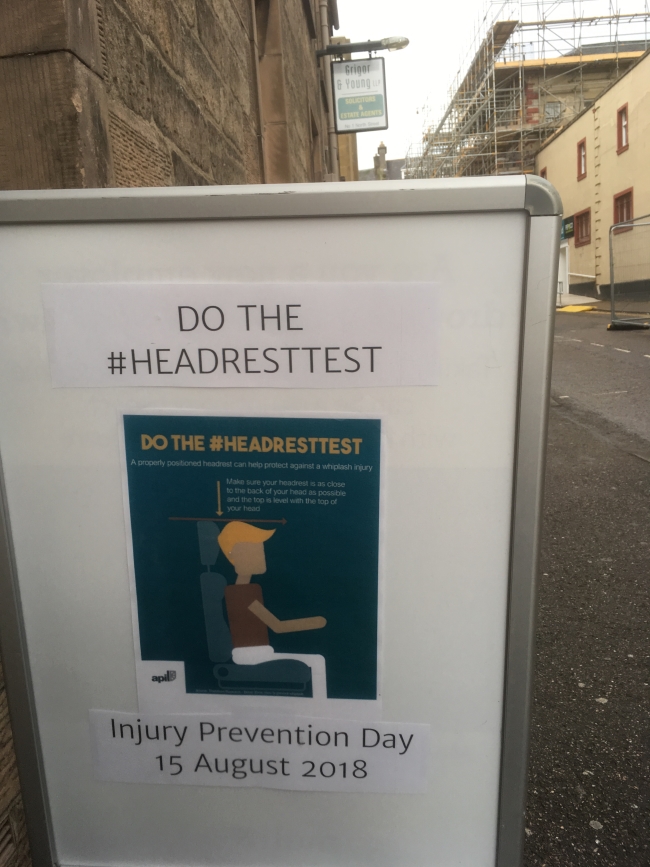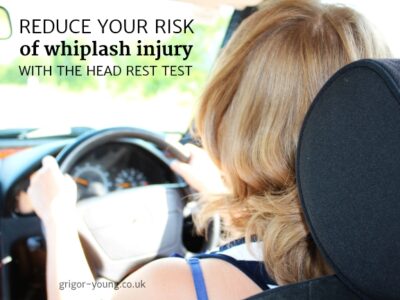Taking a few extra seconds before any car journey could help to minimise the risk of injury to the driver and any passengers.
The Association of Personal Injury Lawyers (APIL) is urging vehicle travellers to “Do the Headrest Test” and protect themselves, by ensuring that their headrests are in the correct position.
This is APIL’s theme for Injury Prevention Day (15 August 2018), supported by motoring safety experts, Thatcham Research. APIL campaigns to improve safety standards and is a not-for-profit organisation.
Research in England has shown that half of all car crashes result in a whiplash injury.
Whiplash is the most common injury in car accidents. At least some of these are avoidable injuries. Applying the head rest test will help.
The way APIL’s president, Brett Dixon, puts it is:
“Your headrest can’t do its job, if you haven’t adjusted it to fit you. It is like leaving the batteries out of a smoke detector.”
It’s a topic we have covered previously in an article on our Moray Claims website.
At that time, we noted that research studies had shown that as many as 60% of drivers failed to correctly adjust their vehicle’s head rests.
The headrest test is very straightforward.
You should make sure it is as close to the back of your head as possible – ideally, touching.
You should be able to draw an imaginary horizontal line across the top of the headrest and the top of your head – i.e. they should be level with each other. You can check this by placing your hand on top of your head and moving it back to feel where the top of the headrest is.
Matthew Avery, Director of Research at Thatcham Research, also has good advice.
- The key factor in protecting people from whiplash injuries is correctly positioning the seat’s head restraint.
- You should check that the headrest is positioned as high as the top of your head.
- If possible, the headrest should also be tilted as close to the back of the head as possible.
- Having the headrest touching the back of the head is best.
- If you are in a vehicle where the head restraint is not adjustable for whatever reason, making the seat more upright can help.
What about the lady in the header image for this article?
Unfortunately, she does not appear to have a correctly-adjusted head rest. It’s too low down as against the level of her head.
It is worth remembering that whiplash injuries can happen to back seat passengers as well as those people in the front seats.
The same adjustments should be made for each of your rear seat occupants as well.
Get into the habit of making these checks before every journey. No two passengers are the same and the headrests need to be tailored to fit each particular occupant on every journey.
How we can help
If you have any questions arising from this article or about any aspect of the personal injury claims services offered by Grigor & Young / Moray Claims, feel free to get in touch with us.
If you have been unlucky enough to suffer a whiplash injury as the result of an accident, contact us to find out more about your legal rights and your options.
All initial discussions are free of charge and without obligation. You can call Peter Brash or Marie Morrison on 01343 544077 or you can send us a Free Online Enquiry.



